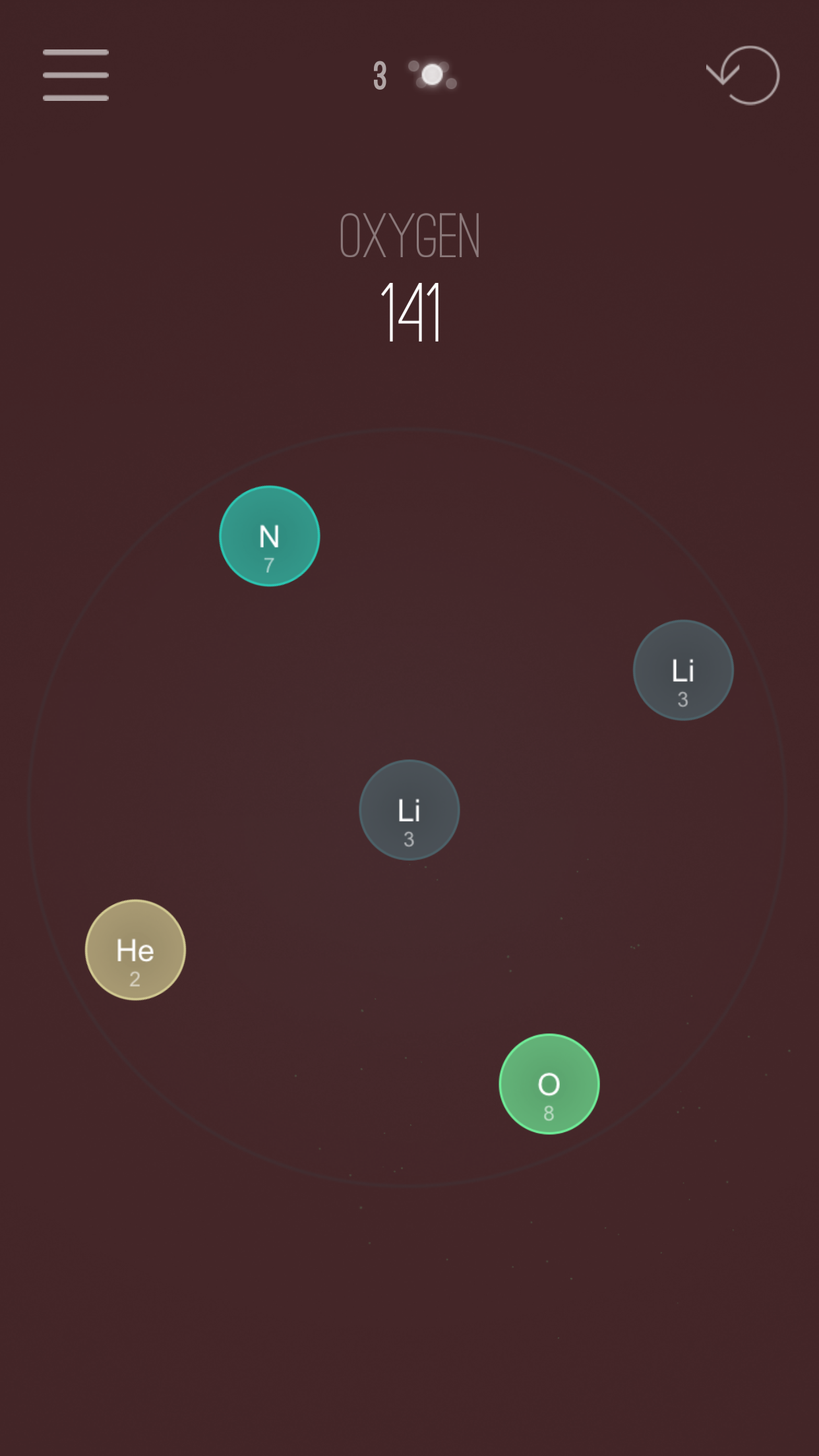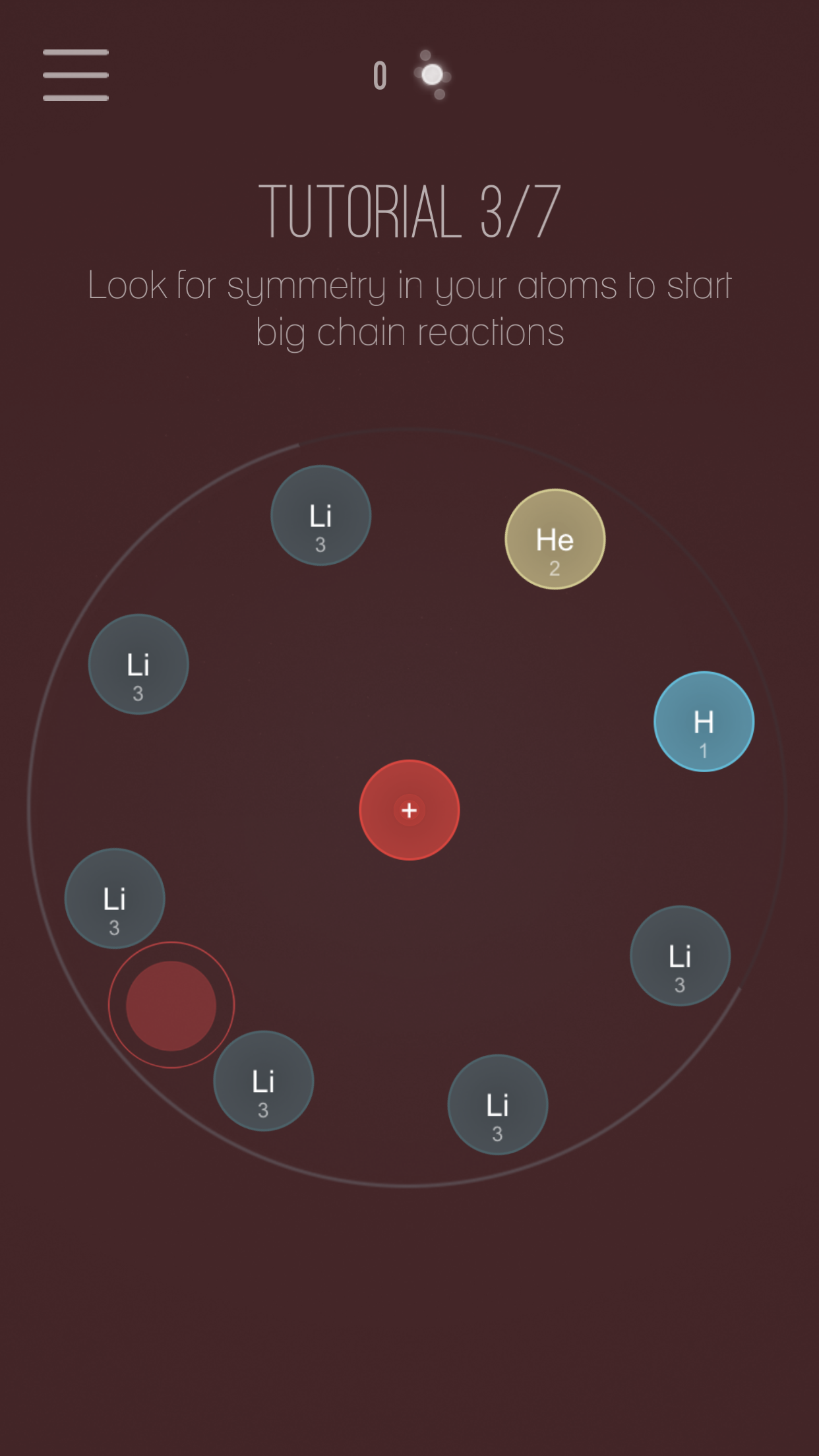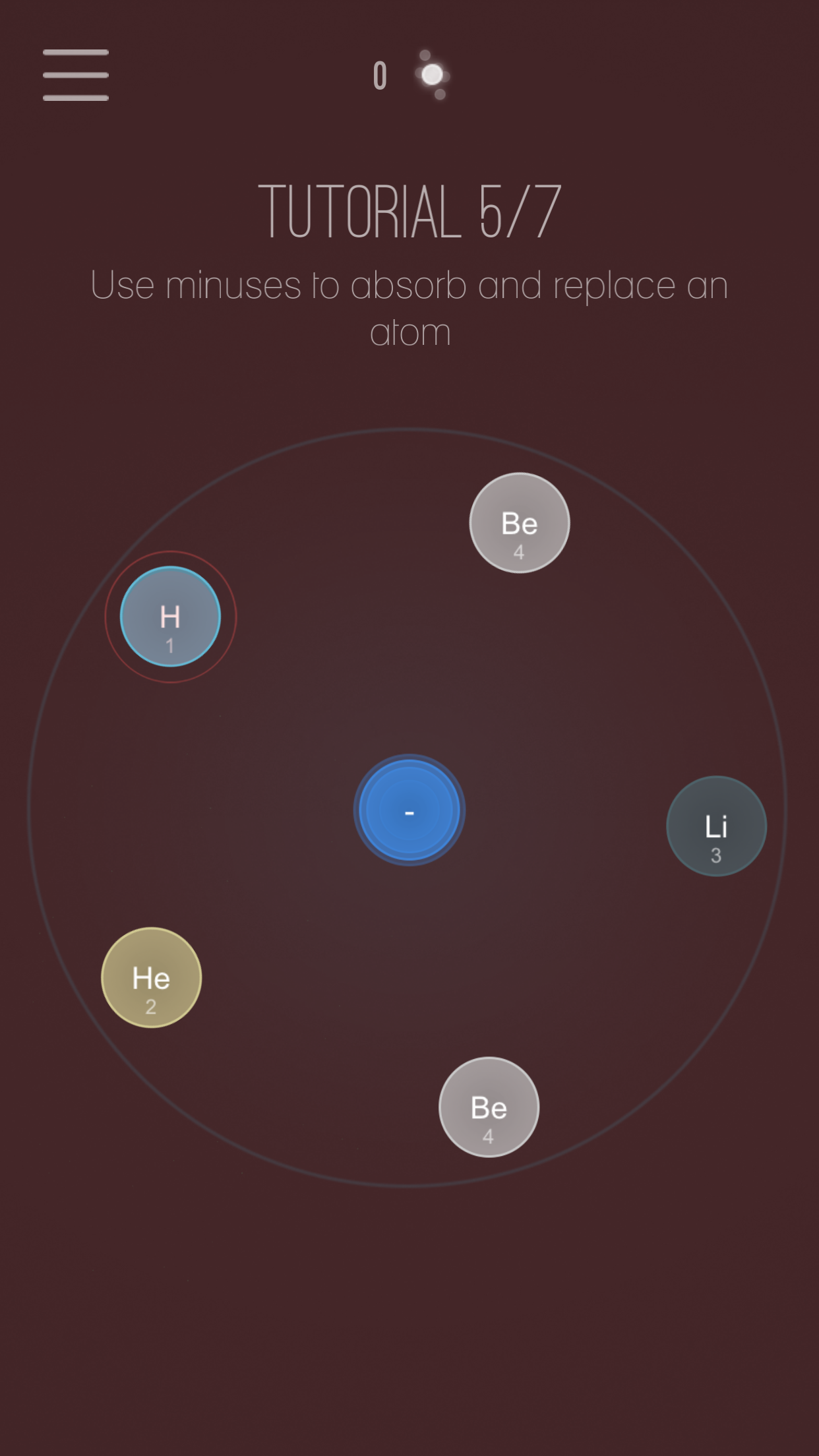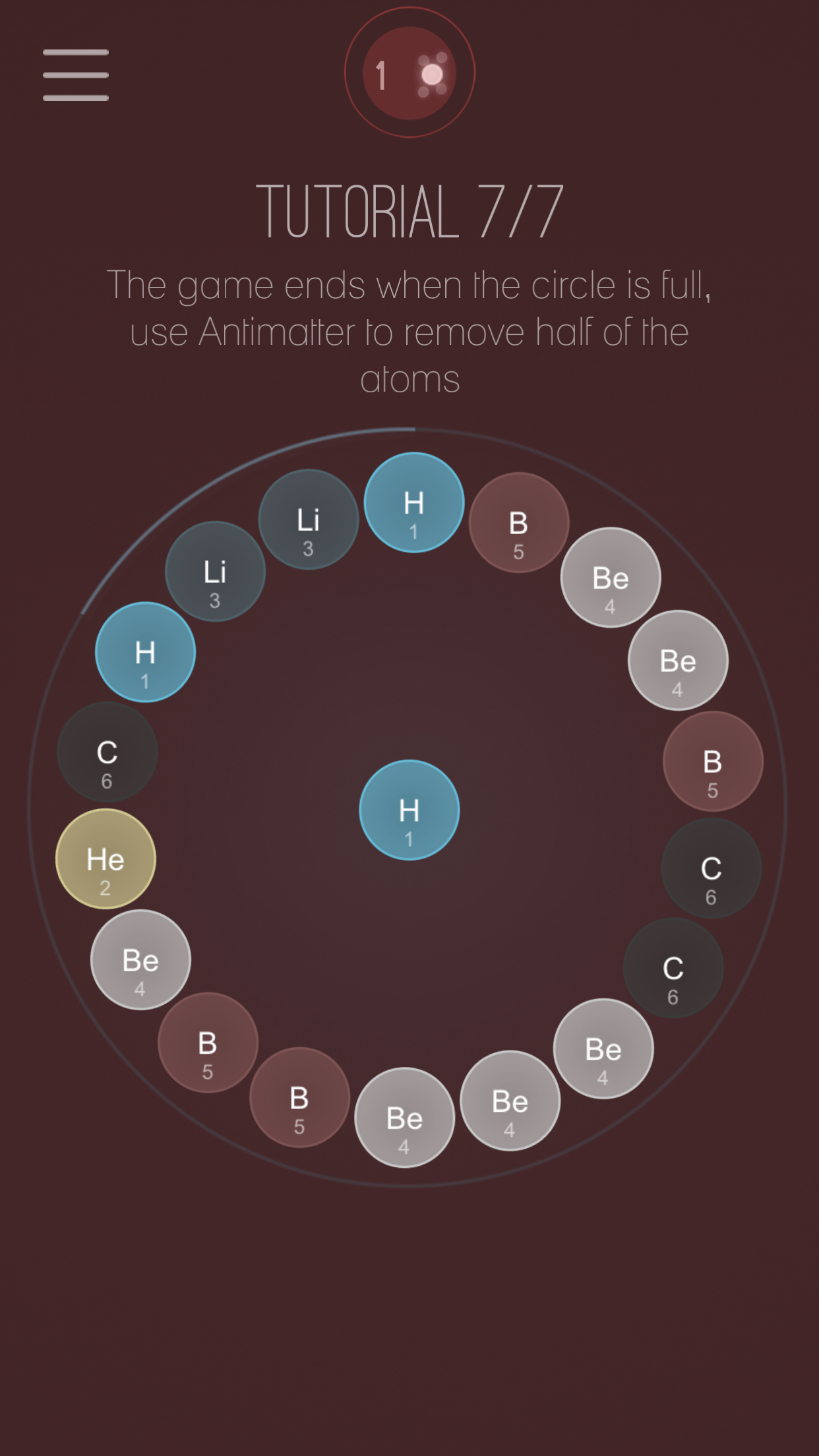A lot of times when downloading and trying out games from the App Store, I find myself dissatisfied with the game just minutes or hours after playing it. It’s not always easy to find those hidden gems that Apple fails to give the spotlight to, but when stumbling across one, I’ll easily get addicted to the game and not want to put the game down.
One such game is Atomas, which is a beautifully-crafted puzzle game by Max Gittel that is centered around the elements of the periodic table and allows you to combine groups of like elements with lower atomic numbers to form elements with larger atomic numbers.
An overview of the gameplay
In the game, you’re given a handful of elements to start out with. These are typically lower atomic number elements, such as Hydrogen (1), Helium (2), and Lithium (3). As you move, turn by turn, you’ll add more elements to the table, and you’ll combine the smaller ones to create larger ones.

The elements on the outside are the ones that you have to pay careful attention to, while the element in the center is the one that you need to add to the table. In the case of the screenshot above, it would be best to place the gray Lithium element in the center right next to the other gray Lithium element already on the table, as it would create an element group.
Using the addition orbs
You essentially want to create symmetry between two halves of the table because occasionally you will receive a red “+” orb, which is used to combine two like atoms to create one with a larger atomic number. The more symmetry that you have, the more chain reactions you’ll get between like atoms, which leads to a higher score down the line and also leads to atoms with significantly higher atomic numbers.

In the case of the example above, the “+” orb will combine all six of the gray Lithium element orbs and the blue Hydrogen and golden Helium orbs would both remain as they’re not matching elements. When the six gray Lithium orbs are combined, the atomic numbers will be added together to make an element with the atomic number of 6, which would be Carbon.
With Carbon now created, you will want to either continue combining other elements to make more Carbons to combine together, or you will want to hope you have good luck and draw a Carbon orb at the center of the table, which you could then place next to the existing Carbon orb to combine together later on.
Using the subtraction orbs
You’ll also occasionally get blue “-” orbs, which are used to remove and replace orbs on the table. You can do one of two things with a “-” orb: 1) you can remove one element orb from the table and move it to another location on the table, or 2) you can remove one element orb from the table and then sacrifice it to create a free red “+” orb.

Keeping a balance
It’s important to keep using combinations of “+” and “-” orbs as you add more elemental orbs to the table, because you want to keep the number of elemental orbs on the table as low as possible. The maximum number of elemental orbs you can have on the table at once is 18, and when you try to add another, you’ll find yourself with a big fat “Game Over” screen.

For this reason, strategic placement of your elemental orbs is highly recommended so that you can clear them from the screen as quickly as possible before the number of elements you have on the table grows.
Fortunately, even if it seems like you’re stuck, despite all attempts to strategically place elemental orbs and efficiently use “+” and “-” orbs to keep the amount of elemental orbs down, there are a few other tips and tricks we can offer you that might help save your skin before the dreaded “Game Over” screen appears.
A few other tricks
Occasionally, after you’ve made it pretty far in the game, you’ll be given a relatively rare black “+” orb, which is different from a common red “+” orb because it allows you to combine two unlike elemental orbs to create another elemental orb. If you remember, the red “+” orb allowed you to combine two like elemental orbs to create another elemental orb.
These come in handy when you create an elemental orb with an incredibly high atomic number and you haven’t been able to match it yet, but you want to make use of the elemental orb. It also helps you reduce space between two different elemental orbs of high atomic numbers when you don’t have the time to clone them with smaller elemental orbs.
Sometimes you’ll also get a plain white orb, which is a cloning orb that allows you to essentially clone any elemental orb on the table. You want to use these when you have an elemental orb on the table with a high atomic number that you haven’t been able to match because then you can add the two like elemental orbs together with a red “+” orb very easily.
Another thing to keep in mind is that the developer gives you a small cheat that you can make use of when you’re feeling like there’s no way out. Dubbed “antimatter,” these cheats appear at the top center of your gameplay experience and can be used to completely clear the screen when you’re getting close to the end of the game and have no moves left. You’re limited to 3, and have to purchase more with in-app purchases to get more, so use these wisely.
There are also other special orbs you’ll come across throughout the game, but they typically reveal themselves at advanced stages in the game, so we’ll leave their discovery to you!
Conclusion
Atomas, with its incredibly easy-to-learn rules, beautiful in-game animations and sounds, and entertaining gameplay will keep you playing for a long time to come. There’s just something about wanting to beat your latest score that makes you want to keep coming back, and with full Game Center support, you can even invite your friends to try and beat your score.
You can download Atomas from the App Store for free from this link. Let us know what you think about it in the comments below!